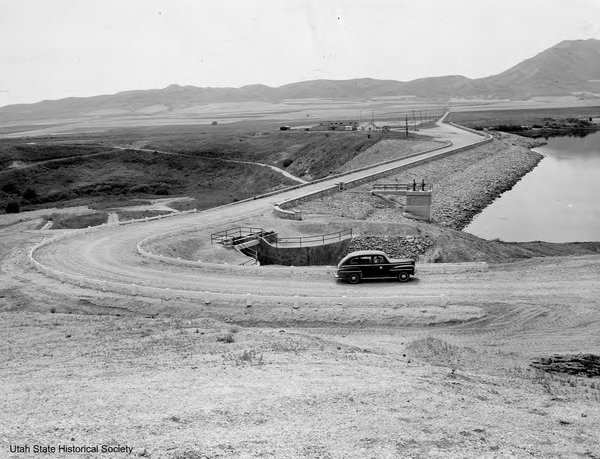Dublin Core
Title
Description
Settled in 1869 on the broad plain of Utah's Cache Valley, the fledgling town of Newton struggled for survival. The meager waters of Clarkston Creek dissipated before they ever reached the town's newly planted fields. Some discouraged settlers moved away almost as soon as they arrived. But a determined few saw the land’s potential -- if only there were water. Two years later, in 1871, residents decided to build a reservoir to conserve the waters of Clarkston Creek during the winter months. It was the first irrigation reservoir west of the Mississippi River and is the reason why Newton exists today.
The first dam on Clarkston Creek was hand-built with dirt and rocks. Heavy spring run-off or ice build-up in the winter threatened to wash away the dam on several occasions. But townspeople monitored and repaired the dam with whatever materials were at hand. Late one night in 1903, for example, Newton residents were called from their beds as the dam threatened to give way. They hauled manure all night to reinforce the structure until more solid repairs could be made. The original stone dam was maintained until the 1940s when federal funding made possible the construction of a new dam. The Civilian Conservation Corps built the new dam about a mile downstream, which created a larger, more stable reservoir. The remains of the original dam are still there, and you can see it peek out of the reservoir when water is low.
In the arid West, life-sustaining reservoirs can also pit communities against each other. From the beginning, residents of Newton and the nearby town of Clarkston disagreed about how much water each should receive. After a long series of disagreements and court battles, the matter was settled in 1922 when Newton won the right to impound water during the winter, but Clarkston got water 15 days out of 20 during peak irrigation season. There are still strong feelings in these communities about water use, and demand for reservoir water is on the rise.
Today, Newton Reservoir is used for recreation and many rely on it for their livelihoods. But with population growth and increased farming, the future of its water will rely even more on community effort.
Creator
Source
_______________
See Newton Arts & Humanities Committee, exhibition file for The Dam That Saved a Town curated by Helen Rigby, 2021; “Newton Reservoir,” National Register of Historic Places Collection, accessed October 2021; Leonard Arrington and Thomas Anderson, “The "First Irrigation" Project in the United States: The Newton Utah Project,” Utah Historical Quarterly 39, no. 3 (1971); The Newton Reservoir, Logan Republican, March 24, 1903.

